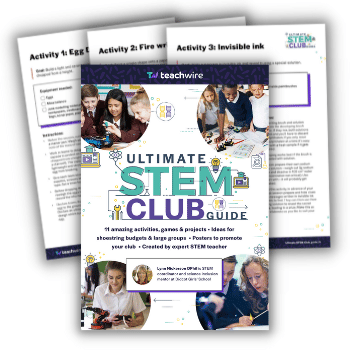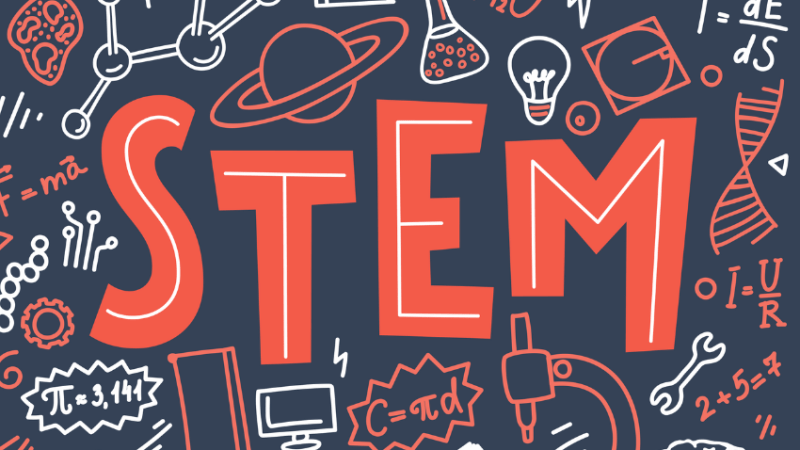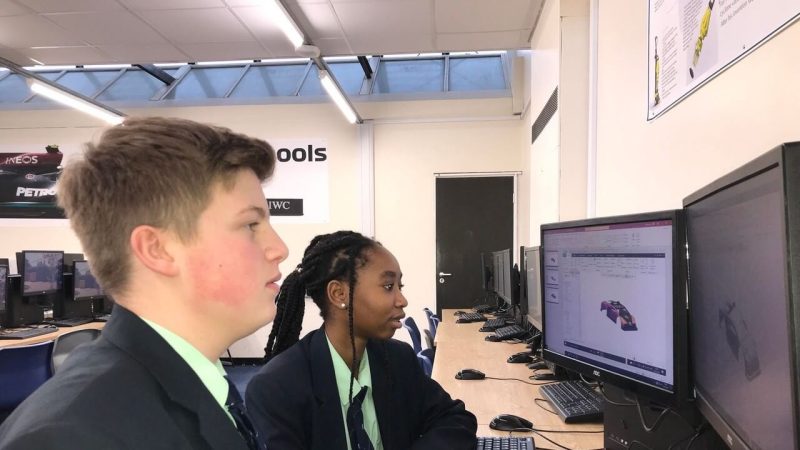Why aren’t More Young People Pursuing a Career in Engineering?

It’s a rewarding, exciting career option, says Neha Okhandiar – so why aren’t more students looking into it?

How can young people future-proof their career? What advice do teachers, careers advisors and parents/carers need to share with pupils now? And what decisions do students need to make in order to keep their options open?
One area that is under-represented and is ripe for a satisfying career is engineering.
Technology has a massive impact on everyone’s lives. From how we work and travel, to the way we engage with friends and family, technology is constantly changing.
Engineers are central to creating incredible devices and software that make the impossible possible. From cyber-security to AI and robotics to 3D printing, engineering offers a wealth of hugely exciting career opportunities.
Engineers are integral to the success of major infrastructure projects and are at the heart of developments in nano-medicine; they make cars safer, roads smarter and broadband faster.
It’s engineers that develop sustainable solutions for our future food, water and energy needs, that work on artificial intelligence and that protect individuals and organisations from cyber-attacks.
It’s engineers whose ideas and innovations will shape our future world, making a real difference to how we live our lives.
But what do engineers do?
Equality, diversity, inclusion
Engineers design the systems, equipment and components that make air travel and space exploration possible.
They develop the hardware and software in our homes, devices and wearable tech. They come up with innovations that improve health and healthcare.
They are key in disaster recovery, flood prevention and building safety.
They are cleaning up oceans, advancing recycling and reducing the carbon footprint in everyday life.
They help amateur and professional sportspeople perform better and even keep animals safe and healthy.
Over a quarter of UK enterprises are involved in engineering, employing more than five and a half million people.
Demand for engineering skills is high and will continue to rise in the future – EngineeringUK estimates the UK will need around 203,000 roles requiring engineering skills to be filled annually through to 2024.
There’s a critical shortfall in the young people on pathways to fill future jobs that won’t be resolved simply by encouraging more people to study science, technology, engineering and maths (STEM).
EngineeringUK is committed to Equality, Diversity and Inclusion and the need to increase the diversity as well as the number of young people choosing academic and vocational pathways into engineering.
Women are underrepresented in engineering, making up only 12% of the workforce,and at A level only 29% of girls take STEM subjects. Black, Asian and minority ethnic people (BAME) are also underrepresented in the engineering sector.
There’s a compelling business case for the sector to harness and widen the talent pool.
This goes beyond securing the numbers of engineers we need – workforce diversity improves innovation, creativity, productivity, resilience and market insight, and should also enable more to benefit from engineering and technology products and services.
Come to the fair!
But what can schools and educators do to break down the barriers for getting more girls and people from BAME backgrounds staying on STEM education pathways? Working in collaboration with charities like us or developing partnerships with local businesses are just a couple of solutions.
Educators can set up or support a code or STEM club in their local schools in partnership with engineering firms and invite diverse speakers or outreach coordinators to deliver activities that excite the next generation of engineers.
Even better, EngineeringUK would encourage schools to consider giving young people the chance to meet industry professionals and really get hands-on with engineering by visiting or hosting their own Big Bang Fair.
Research shows that interactions with real-life engineers help young people to discover how fulfilling, diverse and exciting careers in modern engineering can be.
Literally thousands of these encounters occur each year at The Big Bang UK Young Scientists & Engineers Fair (thebigbangfair.co.uk) held over four days at the NEC in Birmingham with 80,000 young people, teachers and parents attending.
Visitors to The Big Bang Fair (11-14 March 2020) will get to see amazing new technologies in action; from piloting a drone and building a model jet engine to creating a 3D selfie and seeing inside your own eye.
Giving students opportunities to engage with real-life engineers and scientists is central to all EngineeringUK careers activity and helps support schools to meet 29 some of the key Gatsby benchmarks for good careers guidance.
Challenge and success
Other great ways to develop students’ coding and technological skills (as well as interpersonal skills such as teamwork and communication) is to take part in Tomorrow’s Engineers EEP Robotics Challenge and Energy Quest.
The Robotics Challenge gets students aged 11-14 working together in teams to solve real-world engineering, technology and computing challenges.
Facilitated by their teachers who can use the opportunity to grow their technical expertise, students learn how to design, build and control robots to complete a series of challenges and develop and present short research projects into a contemporary engineering problem.
The Tomorrow’s Engineers Energy Quest is also a curriculum-linked, year-round, established programme for schools that helps improve the perception of engineering among both girls and boys.
The free programme encourages young people to find out all about sustainable energy and learn about associated engineering careers.
We’re keen to support and work with teachers, schools and careers advisors and have a wealth of resources that can inspire tomorrow’s generation of engineers and help careers advisors or STEM professionals and ambassadors plan effective engineering outreach activity.
Good examples of this are This is Engineering videos and Tomorrow’s Engineers careers resources which can be used as icebreakers or starter questions, and showcase inspiring real-life engineers.
We also have helpful resources for employers who should be looking to attract a more-diverse cohort include Engineering work experience, an employer’s guide, created by Tomorrow’s Engineers, Royal Academy of Engineering and industry employers.
It might be useful for schools to be aware when they are coordinating work experience with employers. Collaborative working between educators, policymakers, industry and charities is crucial to success if we are to inspire tomorrow’s engineers.
Engineers in action
Case study 1: Philex
Philex designs environment-friendly electronics that collect ambient energy such as solar energy, vibration kinetics, heat, or magnetics in the air. This is then used in next-generation ubiquitous applications such as wearable activity trackers, portable devices and ambient intelligence devices.
“Every time when I have an interesting idea, I spend the majority of my time proving, and seeing and evaluating its impact. Maths, physics and science are very important to what I do; they are like coding tools for coders, cars for drivers, or medical instruments for doctors.”
Case study 2: Mairead
The microchips inside our mobile phones and MP3 players are getting smaller and more capable of doing increasingly amazing things all the time. But, we’re not robots made up of circuits so we need a way of converting digital signals – the way your MP3s are stored – into sounds that we can hear.
This is one of the projects that Mairead works on as a Design Engineer at Dialog Semi-conductor.
“I like it when we get a chip back and the designs I’ve been working on perform correctly. The time-frame from designing to manufacturing and testing a product can often be several months and it’s a nice relief to find out that your work is a success.”
Read more case studies and download free careers resources at tomorrowsengineers.org.uk.
Neha Okhandiar is media manager at EngineeringUK.











